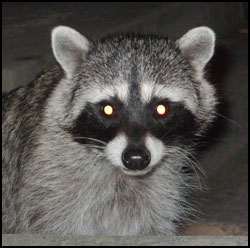HEALTH & NUTRITION...

WDGS & E. coli:
Is There a Connection?
Studies focus on feed ingredient's effects
on levels of E. coli O157:H7 in cattle.
Since 2007, WDGS have been the subject of an array of studies at the ARS Roman L. Hruska U.S. Meat Animal Research Center (USMARC) in Clay Center. James Wells, a microbiologist with USDA's Agricultural Research Service (ARS), has led studies to investigate the relation between use of WDGS in feed and the incidence and persistence of E. coli O157:H7 in cattle manure and on the animals' hides. Read more.
 Prevention is the Best Defense Against Rabies
Prevention is the Best Defense Against Rabies
State veterinarians offer tips on symptoms, prevention.
The number of rabies cases reported in Arkansas through April 28 exceeded the average annual total, according to figures from the Arkansas Department of Health. Rabies is a viral disease that is most often transmitted through the bite of a wild infected animal such as a skunk, bat, fox or raccoon.
Because of their curious nature, cattle are often the most frequently infected domestic animal. In cattle, rabies can look a lot like other conditions, so a proper diagnosis is often delayed. Read more.
Care For When They're Down
Bilingual nonambulatory cattle management training program with certification offered.
Beef and dairy producers, veterinarians and other people involved with animal agriculture condemn willful acts of animal abuse.
A key component to preventing this type of cruelty is the education of animal caregivers on downed-animal care and humane euthanasia techniques. An online nonambulatory cattle management training program that allows tracking of the people who have completed the training is now available in English and Spanish for animal caregivers on beef and dairy cattle operations (http://www.animalcaretraining.org).
The Animal Care Training Program, managed by the Beef Cattle Institute (BCI) at Kansas State University (K-State), was developed by beef and dairy cattle veterinarians, animal scientists, farmers and ranchers to aid the beef and dairy industries and provide 24-hour relevant training for animal caregivers. Read more.

Rick Rasby
Ridin’ Herd
Weaning beef calves early sometimes makes cents.
In areas where forage quality is low and quantity is not adequate in late summer and early fall, early weaning could be a management practice to consider, especially for young cows raising their first calf. Early weaning can enhance the efficiency of drylot cow-calf operations by allowing greater use of poor-quality roughages by the cow herd. Read more.
Watch for Foot Rot
Identify and treat foot rot early to maintain herd health and durability.
Delayed corn planting and flooded pastures may not be the only problems farmers will face from the heavy spring rains throughout much of the Midwest. Moist environments also increase the chance of cattle getting foot rot, says University of Missouri (MU) Clinical Assistant Professor and Extension Veterinarian Scott Poock.
Foot rot is often caused by puncture wounds or continuous exposure to wet conditions that allow a bacterial infection to enter through the skin between the toes in cattle and other hooved animals. Fusobacterium necrophorum is the bacterium most commonly associated with foot rot. It enters through the skin and multiplies, thus taking the infection deeper into the foot and leg. Grazing cattle and feedlot cattle can acquire foot rot that requires treatment; however, producers should keep a particular eye on grazing cattle for symptoms. Read more.
Nationwide Equine Herpesvirus
Investigation Under Way
Animal Health officials nationwide are currently investigating the possible spread of the neurologic form of equine herpes virus 1 (EHV-1) disease, which has been detected in horses that participated in the National Cutting Horse Association Western National Championships in Ogden, Utah, April 29-May 8.
EHV-1 is a viral disease of horses; it does not affect humans. The neurologic form of the disease can manifest itself as hind limb weakness, tremors, recumbency or other nervous-system-type symptoms, which may be preceded by fever or respiratory signs. The disease is most commonly spread by aerosol transmission and can result in death of the affected animal. Texas Animal Health Officials are currently investigating approximately 20 horses in Texas that were reported to have attended the event. All horses known to have attended the event are under movement restrictions. Read more.
Developing Anti-Infective Protocols
Getting the best response from the first treatment helps
reduce overall use.
"The most important measure of treatment response is how often cattle have to be re-treated for BRD," says Daniel Scruggs, Veterinary Operations, Pfizer Animal Health. "Overall anti-infective usage is often dependent upon how often cattle respond successfully to the first treatment administered. The first treatment failure is the first step toward chronics." Read more.
Cattle Diseases: Common Conditions/Terms
Click here for a list of common conditions and terms related to beef cattle diseases, such as anaplasmosis, brucellosis, BVD, E. coli, IBR and others.
[Click here to go to the top of the page.]













